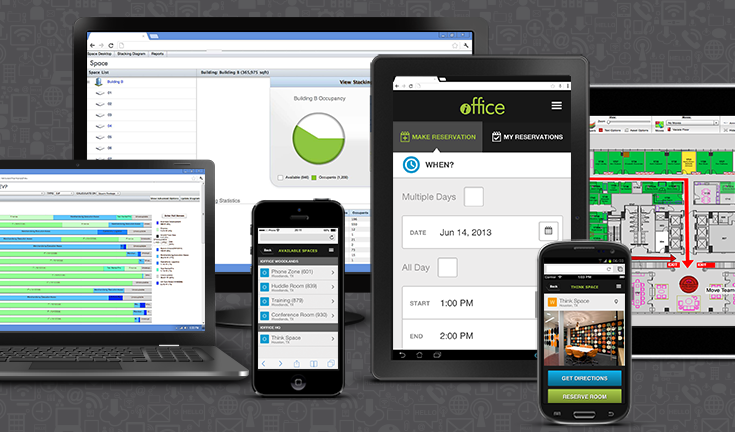In your role as the facilities manager, you have likely found that many of your tasks overlap with other departments. While the duties of the FM, HR and IT vary in description, the job of serving the needs of company employees is a task shared between all three departments. By ensuring those needs are met, your organization retains quality employees, maximizes production and provides the highest quality of service to their customers. For each department to be successful, important information such as who the employees are, what their role is and their location within the organization must be gathered, maintained and shared. More importantly, these departments must identify the resources that are needed for the employees to perform their duties with quality and efficiency.
With collaborations between these three departments a necessity, the utilization of real-time tools such as iOffice’s space management software is your best choice to continue productive growth. This tool serves as a streamlined storehouse for the most accurate and up to date building information. It is through tools, such as space management software, that these departments are able to envisage space utilization, maintain fresh data, resolve office space seating challenges and forecast future issues.
Creating the ideal work environment means being flexible and mobile. A recent Gallup report indicates that only 13% of all employees worldwide are engaged at work, supporting the idea that this is the right time to create greater flexibility and mobility in the workplace. Delivering quality customer service requires careful consideration of both the company and its employees’ needs. And, with 82% of Americans still going to the office 5 days a week, this becomes a daunting task to manage. Without the proper tools, departments will be unable to deliver. The utilization of the latest software tools allows all qualified users to access and share real-time information, such as where an employee sits, what collaborative spaces are needed, when someone needs to move spaces, as well as new hires and the fulfillment of their needs.
Facilities Management Department
The facilities manager must report directly to the executives upstairs regarding the overall health of the organization. Spatial assets and employee costs play a critical role in this overall health. It is through tools such as space utilization software, move management and asset management software that the facilities manager is able to provide the C-Suite with correct analytics and forecasting to determine what is being used, where changes should be made and how to go about implementing these changes. Since FMs share the task of ensuring that workers are consistently engaged and highly productive with both HR and IT, collecting data via emails and spreadsheets not only leaves room for errors, but is not cost efficient time-wise.
IT Department
As our modern world becomes more and more technologically advanced, the IT department’s role is equally indispensable. Business runs on data that must be maintained, secured and distributed. The ability to communicate and share data, whether from one side of the desk to the other or one side of the planet to the other, makes collaboration possible. IT makes that happen. In order to ensure the best technology tools are in place for the various types of spaces that make up the work environment, IT needs to be in sync with FM to understand types of spaces and how they are utilized.
Human Resources
The HR department’s primary role is maintaining the company’s employees’ needs and concerns. Ensuring the employees receive proper training, have the necessary tools to perform their job well and managing job reassignments are just a few of the needs that must be met. Like the FM and IT departments, the HR department must wear many hats and wear each of them well. Efficiency is key and cannot be done without the proper tools. Space management software allows the HR department to collaborate with the FM to seamlessly integrate new employees into the work environment and ensure the facilities manager has accurate details about job types, job titles, departmental assignments for service and resource delivery. Collaboration between these two groups allows for enhanced employee productivity, ensures spatial assets are utilized to their fullest ability and allows both groups to effectively plan for future needs.
Creating an efficient, flexible and customized office space has always been a challenge. But, with the available modern technologies, FMs can collaborate to ensure this job is successfully completed. It is your duty, as the facilities manager, to ensure the proper tools are implemented and utilized , creating an environment where employees not only want to come to work, but want to be productive.
[blog_cta id=’6423a2e1-df57-4df1-90a3-ee17ee2efae7′]
